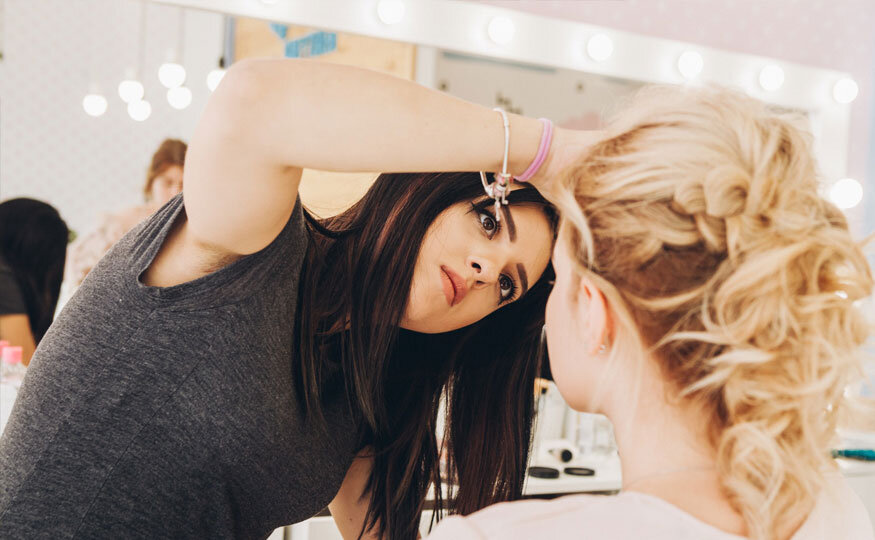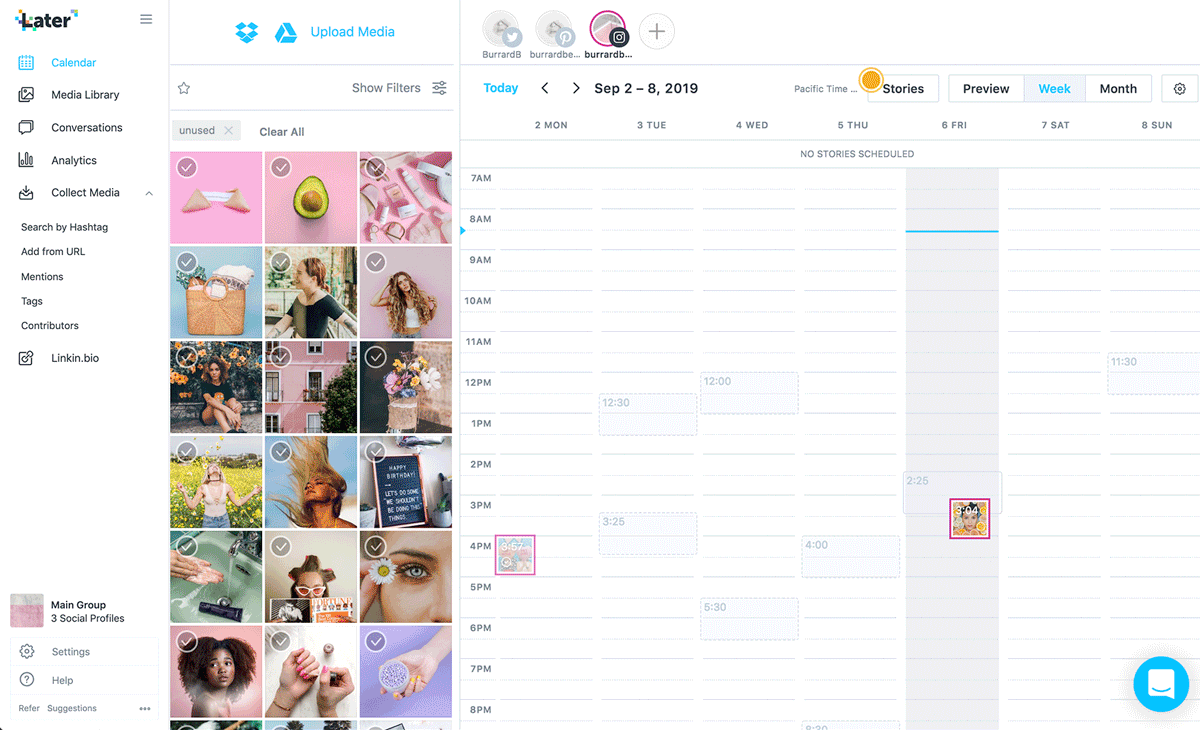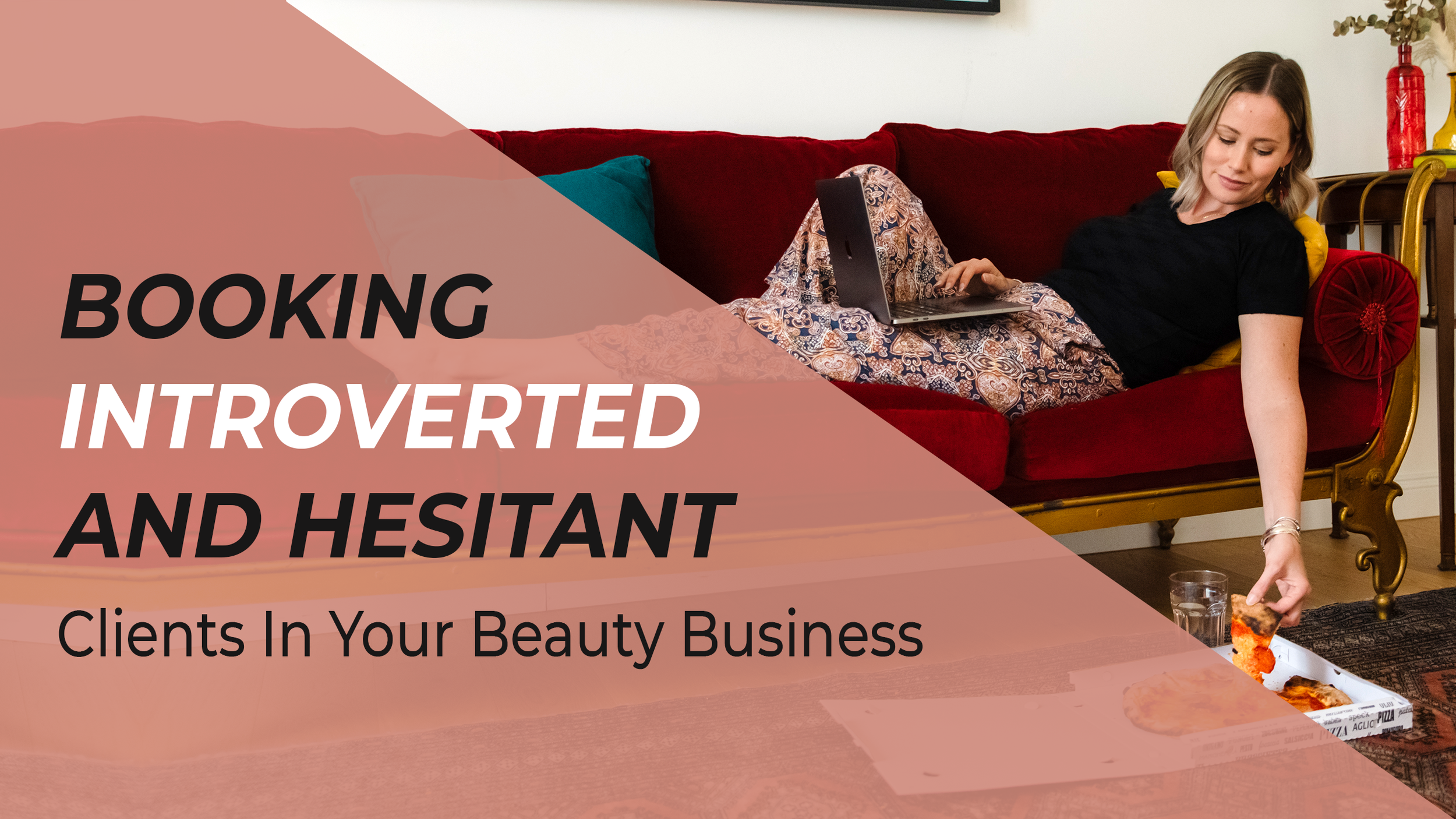Which social media sites does your salon really need to use?
Instagram, Facebook, Twitter, Pinterest, Snapchat, Youtube, and now TikTok… every year there’s a new social network you have to keep up with, and it’s so confusing!
How do you know which ones actually work to grow your business? Do you have to stay active on all of them? Which ones can you ignore?
Which is better to build your business, Facebook, or Instagram?
In this blog post, I want to show you which social networks you need to pay attention to that will grow your online presence, your brand, and grow your clientele (because after all, that’s what we all want, right?)
I’m also going to show you which places will probably be a waste of time for you, and that you can safely ignore without feeling guilty that you “should” be posting there. Guilt has no place in business. To be honest, you simply cannot be “good” at everything. It’s impossible to make an impact everywhere, and if you try to, you’ll just be spreading yourself too thin and not doing a good job at anything.
I’ll also show you some tricks for saving time posting on multiple social media channels, and how to decide which content should go where. Some platforms have their own benefits, and some types of content do best in some places more than others.
Want to finally figure out where you should spend your time and where you should bother for your salon or spa? Keep reading!
Pinterest is actually more of a visual search engine than a social network. I know that many beauty businesses are curious about it because there are so many beauty and hair-related pins on there. Does that mean your salon should be on there, too?
Actually, probably not. This might seem like a disappointment for some people if you’re excited about getting active on Pinterest. For others, it will be a relief because it’s one less social network you have to worry about.
Like Youtube, it’s not meant for targeting local audiences. If your goal is to grow your clientele locally, Pinterest is not going to help you. However, if your audience is national or international, then it could be the platform for you.
Pinterest is perfect for makeup artists and hair stylists that want to book bridal clients who they’ll travel for. If you have an online store and ship nationally, then Pinterest is a great platform. Also, it works if you want to be an educator or instructor nationally. It works great for me because I am targeting beauty business owners internationally.
The type of content that performs really well on Pinterest are blog posts shared by designing graphics with text. Pins should be tall, with a maximum vertical aspect ratio of 1:2.8. As I mentioned earlier, Pinterest is more of a visual search engine. People are searching on the platform for something to buy, try, or learn, so keep this in mind when creating content for Pinterest.
Here’s an example of Pinterest pin from a beauty brand:
Youtube
Youtube is just below Facebook for the social network where people spend the most time. It’s huge, with 2 billion logged-in monthly users. Like Pinterest, you’re probably curious about how you can get lots of people to watch your beauty-related videos to grow your business. But again, I’m going to disappoint you.
If your goal is to target local clients, get more appointments, and grow your revenue as a beauty service provider, Youtube is not the place to do it. It’s not a place where people go to find local businesses. It’s more of a place to search for “smokey eye tutorials” or “how to do balayage on short hair”. Those searches could be coming from anywhere around the world, and there’s no good way just to target potential local clients with your videos. YouTube is not a local marketing platform. People don’t search based on location, so it’s not going to help you connect with local clients, unfortunately.
That said, Youtube can be perfect for building up your personal brand as an educator, influencer, or brand ambassador, getting gigs at speaking conferences, and creating educational content for other beauty professionals.
The type of content that works really well are beauty, hair and makeup tutorials, instructional and educational videos, and vlogs.
Here’s an example of tutorial Youtube video from a beauty brand:
TikTok and Snapchat
I’m going to group these two together. Snapchat’s been around for several years, and TikTok has only gotten popular within the last year or so. The reason I’m grouping them is that they both have similar audiences: younger people under 25 years of age. If this is your primary target audience, if you mostly work with university or high school students, these might be the right platforms for you.
However, just because you have a few younger clients, doesn’t mean you need to cater to them here. You should only put effort into these social networks if this demographic is your bread and butter.
The type of content that works well are short funny videos, have music in them, show the “behind the scenes” side of your business, and are full of people and personality. These platforms are not great for the more polished videos where you want to be professional.
Here’s an example of a TikTok video from a salon:
Twitter
Oh yes, Twitter. It’s been around for a long time now compared to other social networks. And it’s still very popular. I just really don’t recommend it in the beauty industry.
Twitter is all about snappy, quick conversations between people and businesses. It’s not extremely visual, and it requires multiple tweets a day to be very successful. That’s why I recommend that no matter what kind of beauty business you have, you skip this one.
Remember, you only have limited time and energy to do marketing. Do you really want to spend it being active on a platform where you’re shouting into a crowded room, and no one is listening?
Leave Twitter to the politicians and comedians.
I have personally built my business on Facebook. It was the number one social network just a few years ago, but nowadays, more and more people are moving towards Instagram. But that doesn’t mean that Facebook doesn’t have its benefits, too.
No matter what kind of beauty business you have, you should stay active on Facebook. It’ll help you reach double the people. Having an inactive Facebook page could hurt you when you run ads. If your ads appear on Facebook (which they should!), people will go and check out your page, and if you’re inactive, it could give a bad impression.
Facebook is the perfect platform for live video, longer videos, getting reviews, getting found on Google, and if you have a slightly older demographic.
Here are some of my blog posts that will help you with your Facebook strategy:
Why and how to use live video for your beauty business
The best way ever to get more salon appointments on Facebook
4 things Facebook can do for your salon that Instagram can't
How to make binge-worthy videos for your salon's Facebook page
Instagram is the clear winner, and in my opinion, it’s the number one place that your beauty business needs to be. It’s visual, it caters to a female audience, and it’s an easy place to connect with your followers. It’s a great platform if you have a slightly younger demographic, 71% of Instagram users are under 35.
Out of all the other places, your Instagram needs to be front and center in your salon’s social media strategy.
Out of all of Instagram’s features, stories are probably the #1 place you need to spend time. Your feed is perfect for your polished portfolio, but your stories are where you can share all the daily parts of your business and really connect with people. You can have them vote in polls, answer question stickers, and send you DMs as a response.
Here are some of my blog posts that will help you with your Instagram strategy:
7 fun and easy ways to engage salon clients with your Instagram stories
Instagram for salons 101: Everything you need to know to set up and grow your account
The ultimate guide to Instagram hashtags for salons
Free eBook: One Month of Salon Instagram Posts
How to save time with social media
To save time on social media, schedule a “shoot day” and create all of your content at once. You can have a month or two worth of content shot in one day. In addition, every day you should set aside a few minutes to take photos of your clients, such as before and after photos. If you want more ideas for what to put in your photos, download my free ebook for one month of salon Instagram posts planned out for you.
After you’ve shot all of your content, schedule your posts out once a week on your “admin” day. This will probably just take an hour or two, and you can knock out your captions and research hashtags for your posts. By getting it done, you’ll feel so much better and freer throughout the week. Your only job during the week will be to take photos!
Edit your photos with a similar filter, so they are cohesive. I personally love using Snapseed or Lightroom mobile. When you edit them with a similar style, they’ll all have a similar vibe. Not sure how to edit your photos or what style you should use? Learn how to create a visual theme here.
Once your content is shot, and your captions are written out, schedule all of your posts with Later.com to go out on Facebook and Instagram. Your content should be slightly different between the two platforms, and you should remove the hashtags on Facebook posts. Add in extra content on Facebook when you can. This can be live video, longer videos, or blog posts.
Later is fantastic for scheduling your posts so they go out automatically - use it for both Facebook and Instagram - and also laying them out visually on Instagram so you can see what they look like beside each other and move them around. It’s one of my favorite time-saving apps for your salon marketing.
Source: Later.com
In conclusion
Before deciding on what social networks you need to put your effort into, remember to ask yourself: who is your clientele, where do they spend the most time, and what are your goals for your business.
Not all social media networks are going to help build your salon. When trying to decide which platforms to focus on, think about the places where local clients could find you. Pinterest and Youtube are not the ideal places to get found, as they’re not focussed on getting found locally. So that leaves you with Twitter, Instagram, Facebook, Snapchat, and TikTok.
Be honest with yourself about where your clients are and where they’re spending the most time. Which places are going to help you to grow?
Finally, remember that you can’t be everywhere and do everything all at once. It’s better to choose one or two places and work hard on those, instead of trying to be good at everything. Focussing on just a few key places will prevent you from getting overwhelmed, and will help you to shine online.













